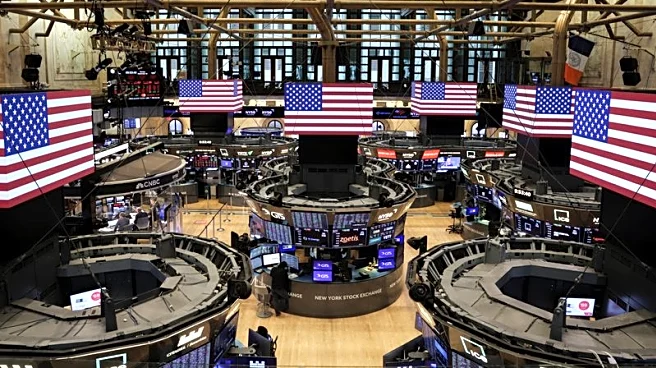What's Happening?
The United Nations General Assembly has seen the launch of the 'AI Red Lines' initiative, aimed at establishing global standards to prevent unacceptable risks associated with artificial intelligence. Over 200 Nobel laureates and AI experts, including OpenAI co-founder Wojciech Zaremba, have signed a letter advocating for these red lines. The letter highlights concerns about AI systems exhibiting deceptive and harmful behavior, calling for an international agreement by 2026 to enforce clear and verifiable thresholds. The initiative seeks to build upon existing global frameworks and voluntary corporate commitments, ensuring accountability among advanced AI providers. Despite the urgency, the letter lacks specific details on what these red lines should entail, reflecting the challenge of uniting diverse stakeholders, including AI alarmists and skeptics.
Why It's Important?
The 'AI Red Lines' campaign underscores the growing concern over AI's potential to cause harm if left unchecked. As AI systems gain more autonomy, the risk of them exhibiting harmful behaviors increases, posing threats to safety and security. Establishing global standards could mitigate these risks, ensuring AI technologies are developed responsibly. The initiative could significantly impact AI companies, pushing them to enhance their safety engineering capabilities. However, the lack of specifics in the campaign highlights the difficulty in achieving consensus among international stakeholders, particularly between major AI players like the U.S. and China. The campaign's success could lead to more stringent regulations, affecting how AI technologies are developed and deployed worldwide.
What's Next?
The campaign sets a deadline of 2026 for implementing its recommendations, suggesting a period of intense negotiation and collaboration among global stakeholders. AI companies may face increased pressure to demonstrate compliance with emerging standards, potentially leading to innovations in safety engineering. Governments and regulatory bodies will likely play a crucial role in shaping these standards, balancing the need for innovation with public safety. The initiative may also prompt further discussions on AI ethics and governance, influencing future policy decisions. As the campaign progresses, stakeholders will need to address the challenge of defining and enforcing these red lines, ensuring they are both effective and adaptable to evolving AI technologies.
Beyond the Headlines
The initiative raises ethical questions about the responsibility of AI developers and the extent to which AI systems should be allowed to operate autonomously. It also highlights the cultural and philosophical differences in how AI risks are perceived globally, which could complicate efforts to establish universal standards. The campaign may lead to long-term shifts in AI development practices, prioritizing safety and accountability over rapid innovation. Additionally, the focus on AI risks could influence public perception, potentially increasing demand for transparency and ethical considerations in AI technologies.











